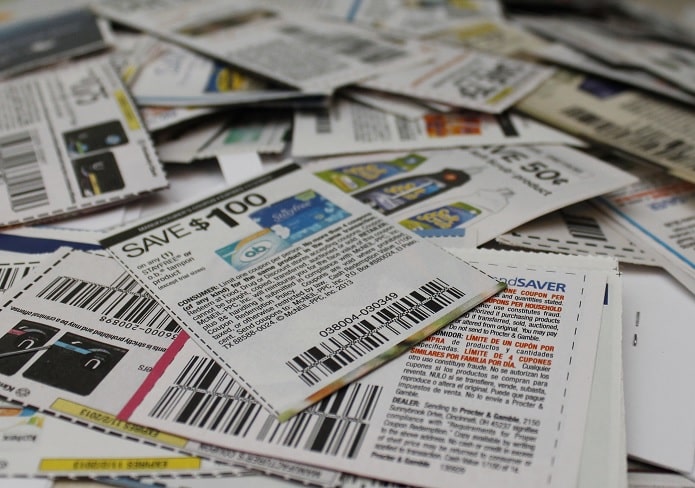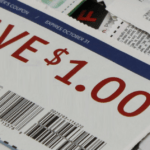
At least two major manufacturers have completely eliminated paper coupons for some or all of their brands. Many others are cutting back on their printed coupon offers. And they’re all part of what appears to be a growing trend.
A new report from Vericast finds that more than a third of all brands plan to offer fewer paper coupons this year – even though some segments of the population are still seeking them out. That means some brands may be alienating shoppers by not offering them the deals they want in the format they prefer, potentially causing them to shift their business to brands that do.
Vericast surveyed shoppers, brands and retailers for its 2022 CPG and Grocery TrendWatch report. One of the main takeaways is that print coupons are still important to the shopping experience, but with a shift to digital offers well under way, some shoppers may be getting left behind, just when they need deals the most.
51% of all brands and retailers surveyed said print is still an important part of their consumer marketing strategy, but 49% said they plan to shift some of their promotional budgets away from print. 38% of brands say they are cutting back on paper coupons, while 36% of retailers are cutting back on printed circulars.
This change in marketing tactics comes just as consumers are changing their shopping behaviors in the face of rising prices, out-of-stocks and economic uncertainty. Two-thirds of shoppers say they feel anxious about inflation, and nearly half say they’re struggling to afford essentials.
So where are they looking for savings? It depends on who the shopper is.
Older shoppers are among those most concerned about rising prices – and most likely to seek out coupons where they’re less likely to be offered these days. 83% of boomers surveyed said the increase in prices is their biggest challenge when shopping for food, personal care and household items. They’re also the generation most influenced by print ads and coupons. 43% said coupons that arrive in the mail or newspaper are the biggest influence when it comes to persuading them to shop at a new store or try a new product, with print circulars delivered to their home a close second. But those printed ads and coupons are getting harder to find – “almost half of baby boomers,” the report notes, “aren’t getting the printed store ad they want in their mailbox.”
And while brands and retailers overwhelmingly rate social media as a more effective communication method than print media – 63% versus just 19% – baby boomers are the least influenced by social media, with only 6% saying it affects their decision to try a new store or product.
It’s more evidence, as argued in a recent review of grocery ads, that seniors may be getting left behind as more coupons shift from paper to digital.
Unsurprisingly, the younger the shoppers, the more likely they are to be unbothered by the increasing shift to more digital offers. At roughly 25% each, millennial parents are about equally influenced by paper coupons, digital coupons, social media and mobile ads when it comes to where they shop and what they buy. 65% of millennial parents say it’s important that their primary grocery store “uses the latest technology,” with 58% expecting personalized promotions based on their shopping habits and interests. And 56% say their store “meets their needs for home-delivered print ads,” which means the majority is satisfied with the number of printed ads – or perhaps the lack thereof – that they receive.
Younger shoppers are also more likely to buy groceries and household necessities online, with a third of them seeking out digital coupons when they do. But while 81% of grocery stores rate themselves highly for having a shoppable, user-friendly digital version of their weekly circular, less than half of their shoppers agree. “Consumers are not fully satisfied with retailers’ digital weekly ads,” Vericast Director of Client Strategy Julie Companey said in a statement. “To stand out, retailers need to make their weekly ad experience dynamic and interactive.”
The youngest shopper category – Gen Z – is least concerned with the increase in prices lately. But they’re also the least satisfied that their primary grocery store meets many of their needs. So this age group is the most persuadable, when it comes to trying new stores and products. But they’re not necessarily influenced by the paper coupons that their grandparents are seeking. A quarter of Gen Z shoppers – the highest among all age groups – say they are influenced by what they see on social media.
So never mind the debate between paper and digital coupons. Social media, Vericast predicts, could be where many promotions are headed next. “Influencer marketing is dominating in 2022,” Vericast’s Executive Director of Client Strategy Aimee Englert said. “Influencer social posts and online comments and reviews… will continue to dominate and evolve, forcing marketing strategies to change.”
As always, Vericast says, the best promotional strategy is a mix of tactics, to ensure that all shoppers can find deals where they’re looking for them. “Marketers need to know how different segments spend and how to capture their attention,” the report concludes. So for every online influencer who helps earn a Gen Z shopper’s business, an old-fashioned paper coupon in a newspaper insert might have the same effect on an older shopper.
But just as some shoppers today lament the decline of paper coupons, a generation from now, shoppers may be wondering where all the digital coupons have gone. And after that – well, who even knows what kind of coupons will exist? Just as long as, one hopes, future generations aren’t stuck having to pay full price.
Image source: cpyles













